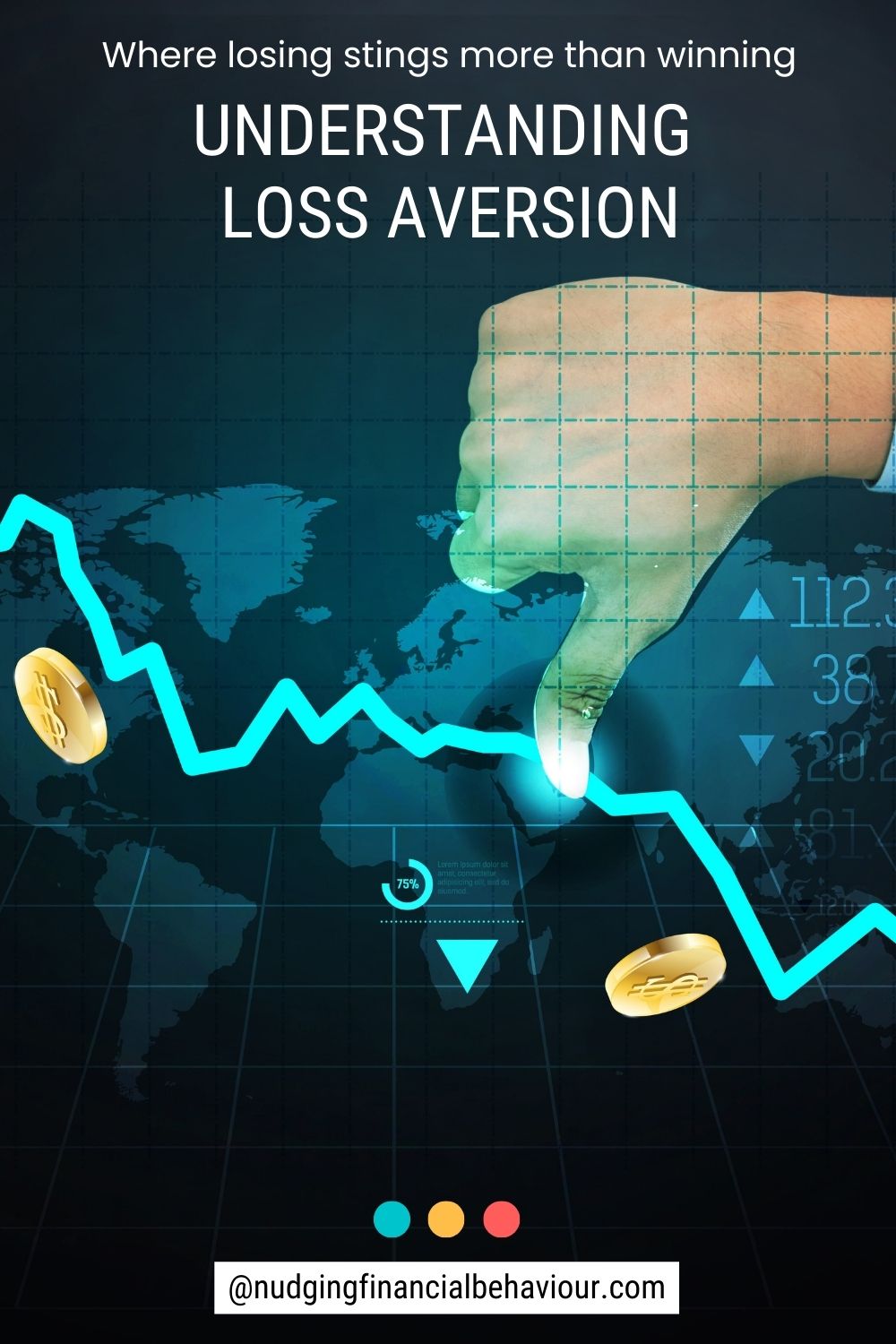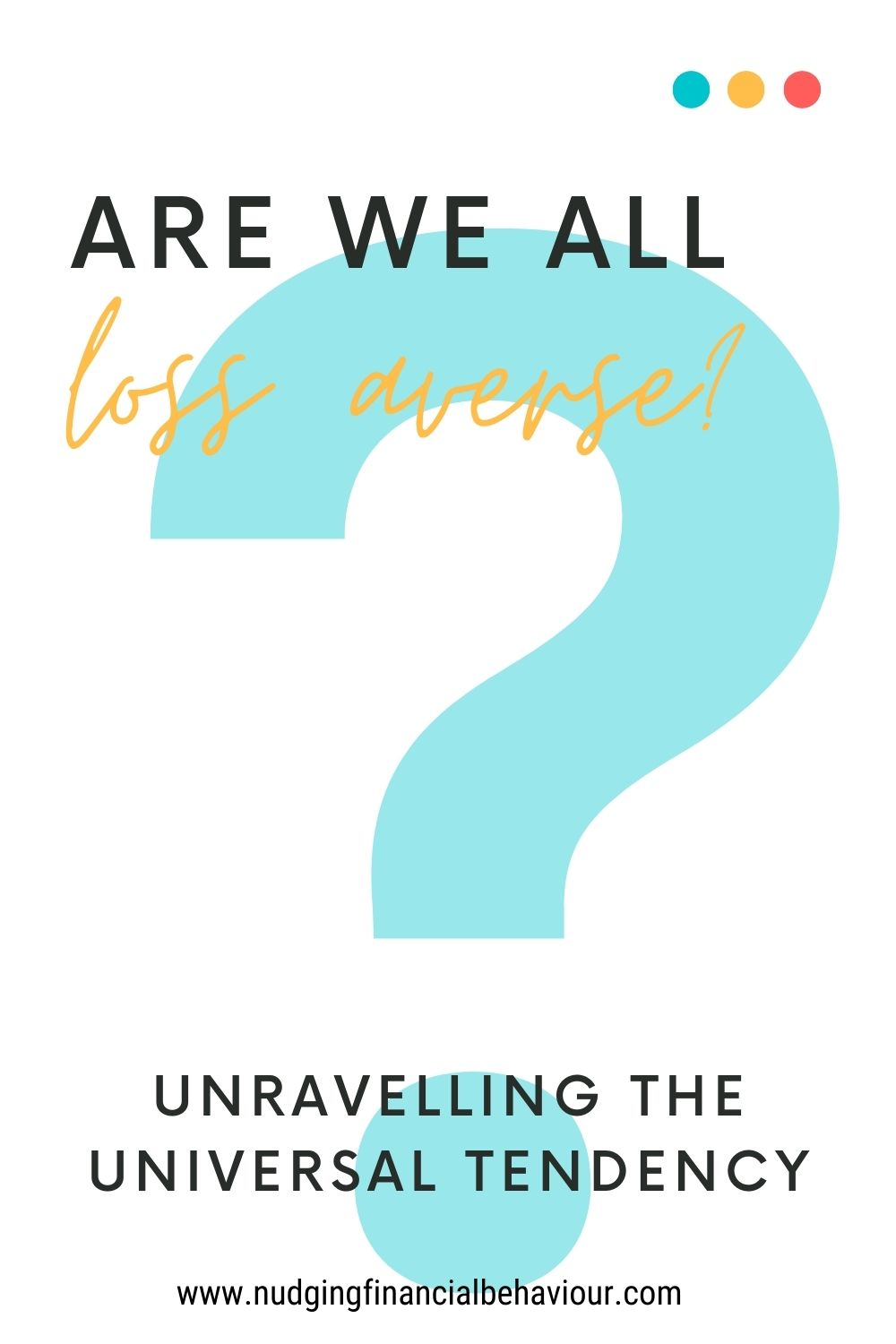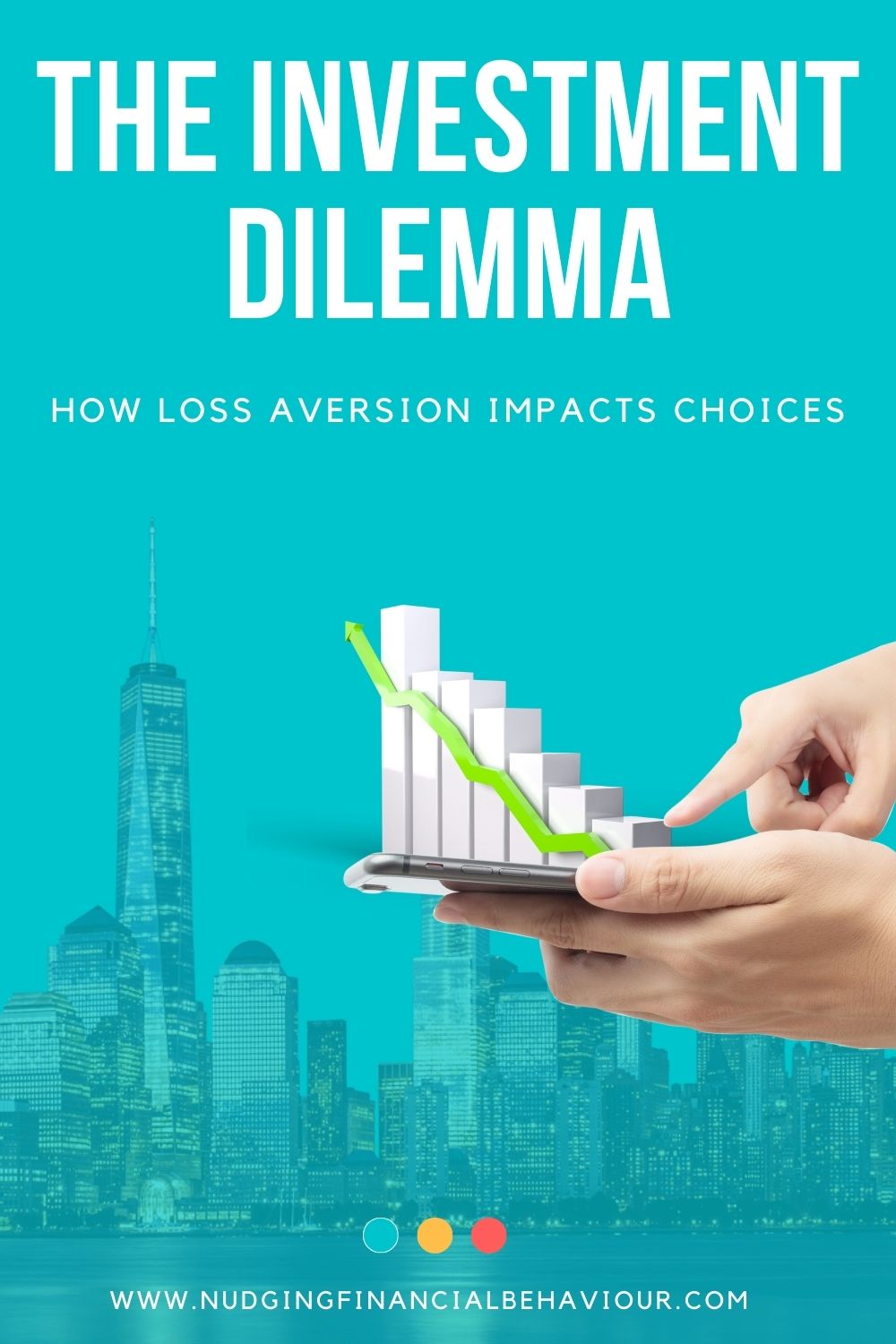In the previous post we spoke about risk tolerance and risk aversion. All the intricacies of our risk personality, behaviour and attitude. In this post, we are steering into a different lane – loss aversion.
It’s a common misconception to use the terms risk aversion and loss aversion interchangeably, but make no mistake; they’re distinct biases. To unravel some of the complexity of loss aversion, we engaged with Greg Davies, a seasoned Dr of Behavioural Finance from Oxford Risk.
You can listen to the podcast, or watch the full episode below. If neither those options suit your fancy, then just continue reading…
Loss aversion, in all its complexity, manifests when individuals exhibit both risk-averse and risk-seeking behaviour, all in a desperate bid to sidestep potential losses. Why? Because the psychological weight of a loss far surpasses the thrill of a gain of equal measure.

Simply put, when you are loss averse – losing is more painful than the joy you’d feel from winning something of the same value.
Cue the crucial takeaway: when loss-averse, the pain of losing outweighs the joy of winning. Share on XContrast this with risk aversion, where gains and losses are treated as equals – it’s the uncertainty that’s the real nemesis. However, loss aversion takes it up a notch, as it ascribes a higher subjective value to losses.
Enter Prospect Theory, which we discuss in detail in another post. This theory reveals that the subjective value we place on a loss eclipses the actual loss itself. While the degree varies from person to person, most of us grapple with some form of loss aversion.
We posed the question to Greg: “Are we all loss averse?” The resounding answer: mostly yes.
The answer is mostly yes. Not everybody is loss averse in every environment. There are people who actually don’t display it in certain environments and only display it in others. But I think on the whole, it is a safe bet to say that we all have a tendency towards being loss averse. Because it is a bias, it is something that causes us to deviate from what economists think of as rational behaviour. Because it is a bias, it can cost us money. So, it is something that I think all of us need to be on guard against, yes.
While not everyone displays it universally, the tendency towards loss aversion is a safe bet. A bias that deviates from rational behaviour, it can cost us money – a call for perpetual vigilance.
We are all loss averse! Share on XLet’s now dissect when this penchant for loss aversion becomes problematic.

It [loss aversion] becomes a problem when it causes our decision making to deviate from the decisions that will be best for the objectives we’re trying to pursue.
The issue arises when our decision-making deviates from the optimal choices aligning with our objectives. Loss aversion, framed in the short term, triggers decisions rooted in present emotions, not long-term logic. This discrepancy in decision-making can have a hefty price tag.
The thing about loss of aversion is because it is about framing, it is inherently short term. It’s about the decision I’m making today. And none of us ever make decisions in the long term. We only ever make decisions in the present, now. So, if I am responding to a particular framing of gains and losses in a way that makes me scared of the red, scared of the lost stuff, and it causes me to place too much emotional attention on these losses, that is correct for the decision I’m trying to make for the long term. It means I’m making a different decision to the one I should do. And that costs us money.
In investing, what is comfortable is rarely profitable.
Now, let’s zoom in on how loss aversion handcuffs our investing potential.
In the short term, a lot of people fail to invest. They fail to put their money to work because they get really scared that if I put my money into the markets today, it may go down tomorrow. And this is where loss aversion kicks in. In the long-term, tomorrow’s dip over five or ten, fifteen years is going to be utterly inconsequential to my investing activity. But right now, when I’m making this decision, it seems to matter a lot. So, what I do is I don’t invest. I postpone, I go, oh, I’ll wait till next week when I feel more comfortable. Or maybe I do invest, but instead of investing everything I need to, I only invest 50% of it. And we see all around the world, probably the biggest behavioural cost that most people make is not what they do when they invest, is that they leave too much of their savings sitting doing nothing year after year after year after year.
In the short term, many shy away from investing due to the fear that today’s market plunge might haunt them tomorrow. Loss aversion whispers in their ears, making today’s decisions feel weightier than it is in the grand scheme. Consequently, investments get delayed, scaled back, or worse, left untouched for years, a costly behavioural misstep.
I guarantee you even when times are going well, some of them will be flashing red. It draws your attention, it triggers loss aversion.
Greg also raised a valid point about portfolio checking habits. Monthly scrutiny reveals red numbers about 40% of the time, while annual check-ins drop that figure to a mere 10%. Same portfolio, same investment, but the frequency of evaluation intensifies the emotional response tied to the loss aversion.

The stock market is designed to transfer money from the active to the patient.
None of us like seeing red in our portfolio. Just makes one think… if we can change our computer and mobile phone screens to dark mode, maybe there’s a gap in the market to change our trading screen from red and green to pink and purple to lighten the emotional load? Food for thought!
Risk aversion and loss aversion, colossal concepts indeed, may seem daunting. However, here’s a nugget of wisdom: fortify your defences against these biases with a well-defined asset allocation plan. And think carefully about how often you assess your portfolio. Make sure it’s done in a measured timeframe so that you aren’t setting yourself up to make emotional, knee-jerk reactions.
It’s not whether you’re right or wrong that’s important, but how much money you make when you’re right and how much you lose when you’re wrong.
There’s still quite a bit more to unpack on this topic. Looking ahead, in the next post we’ll unravel the distinction between risk and uncertainty, opening the door to biases such as Gambler’s Fallacy.
Want to pin this post for later?
[apsp_save_button type=’one-image’ shape=’rectangle’ size=’large’ save_url=’www.nudgingfinancialbehaviour.com/loss-aversion’ save_image=’https://www.nudgingfinancialbehaviour.com/wp-content/uploads/2023/12/loss-aversion-meaning.jpg’ image_description=’We chat to Dr Greg Davies about loss aversion; it’s a bias that costs us money so we need to guard against it.’]
Narrow framing – Narrow framing, the compromise effect, glossing, and the enabling frame. We need frames to make sense of the world. But they cause problems.
The anchored trader – Anchors tie us down and can have serious consequences for investors and traders. Don’t be the anchored trader.
Let us know in the comments below.
[apsp-follow-button name=’nudgingfinancialbehaviour’ button_label=’Follow on Pinterest’]
I am passionate about helping people understand their behaviour with money and gently nudging them to spend less and save more. I have several academic journal publications on investor behaviour, financial literacy and personal finance, and perfectly understand the biases that influence how we manage our money. This blog is where I break down those ideas and share my thinking. I’ll try to cover relevant topics that my readers bring to my attention. Please read, share, and comment. That’s how we spread knowledge and help both ourselves and others to become in control of our financial situations.

Dr Gizelle Willows
PhD and NRF-rating in Behavioural Finance
Receive gentle nudges from us:
[user_registration_form id=”8641″]
“Essentially, all models are wrong, but some are useful.” – George E.P. Box
